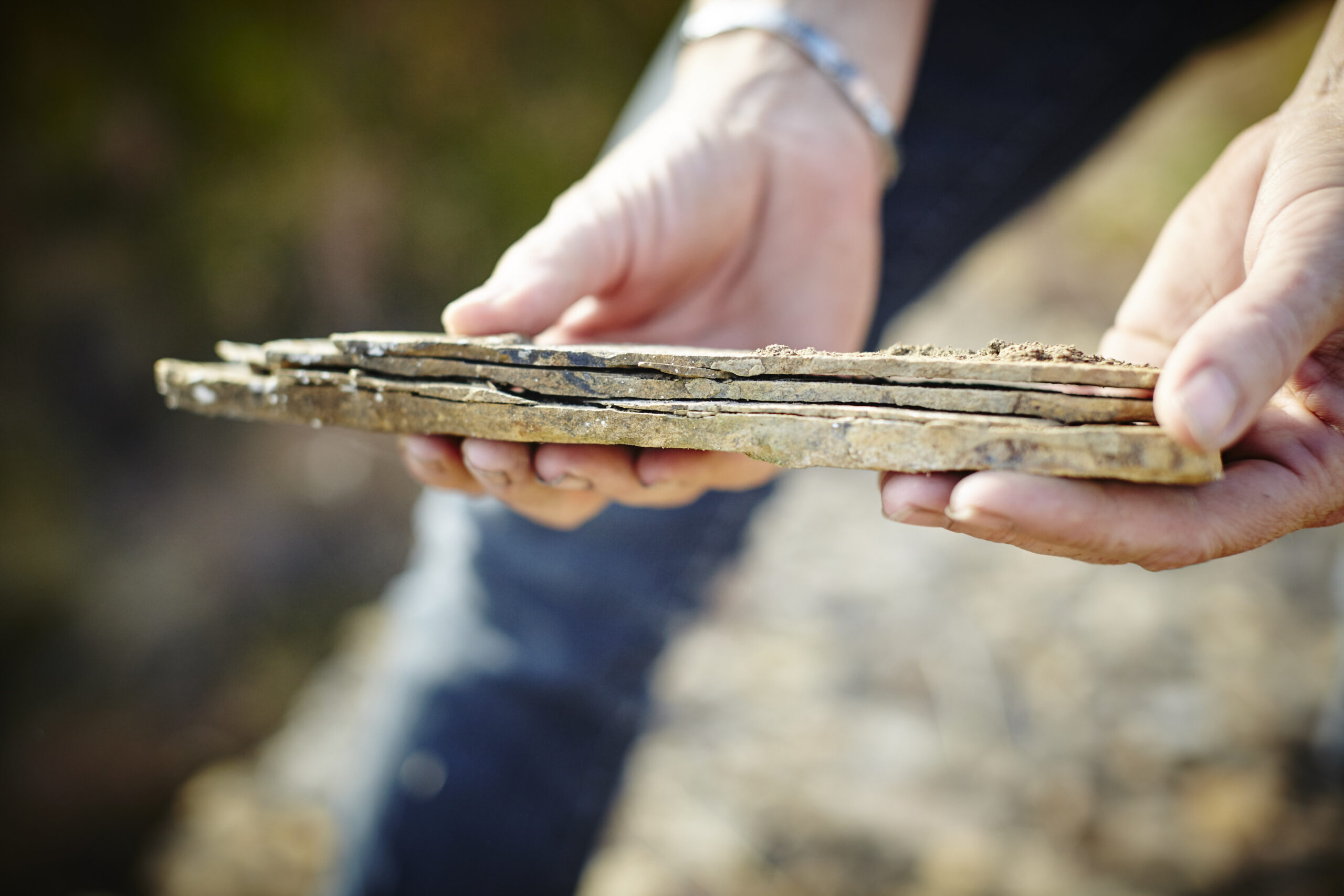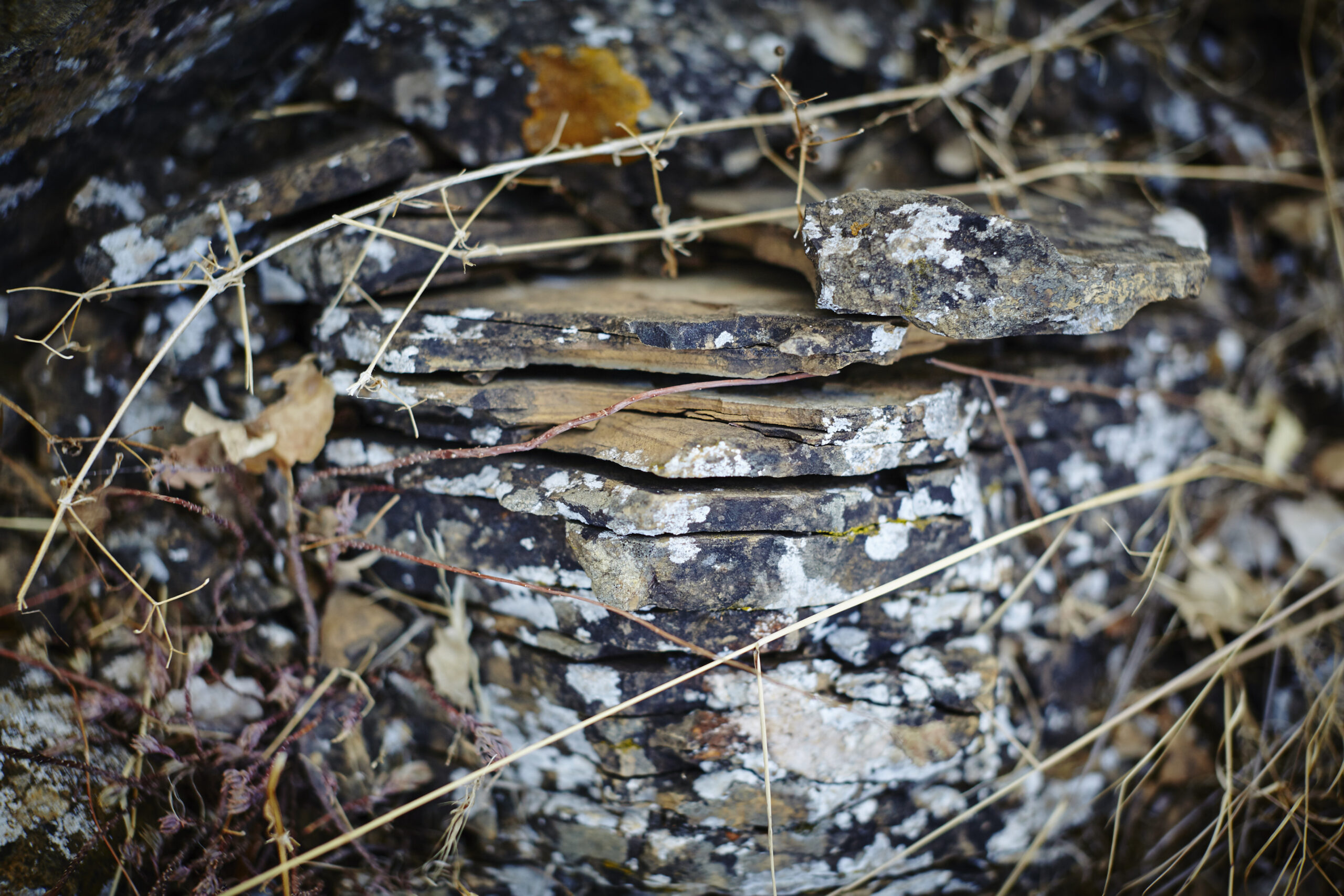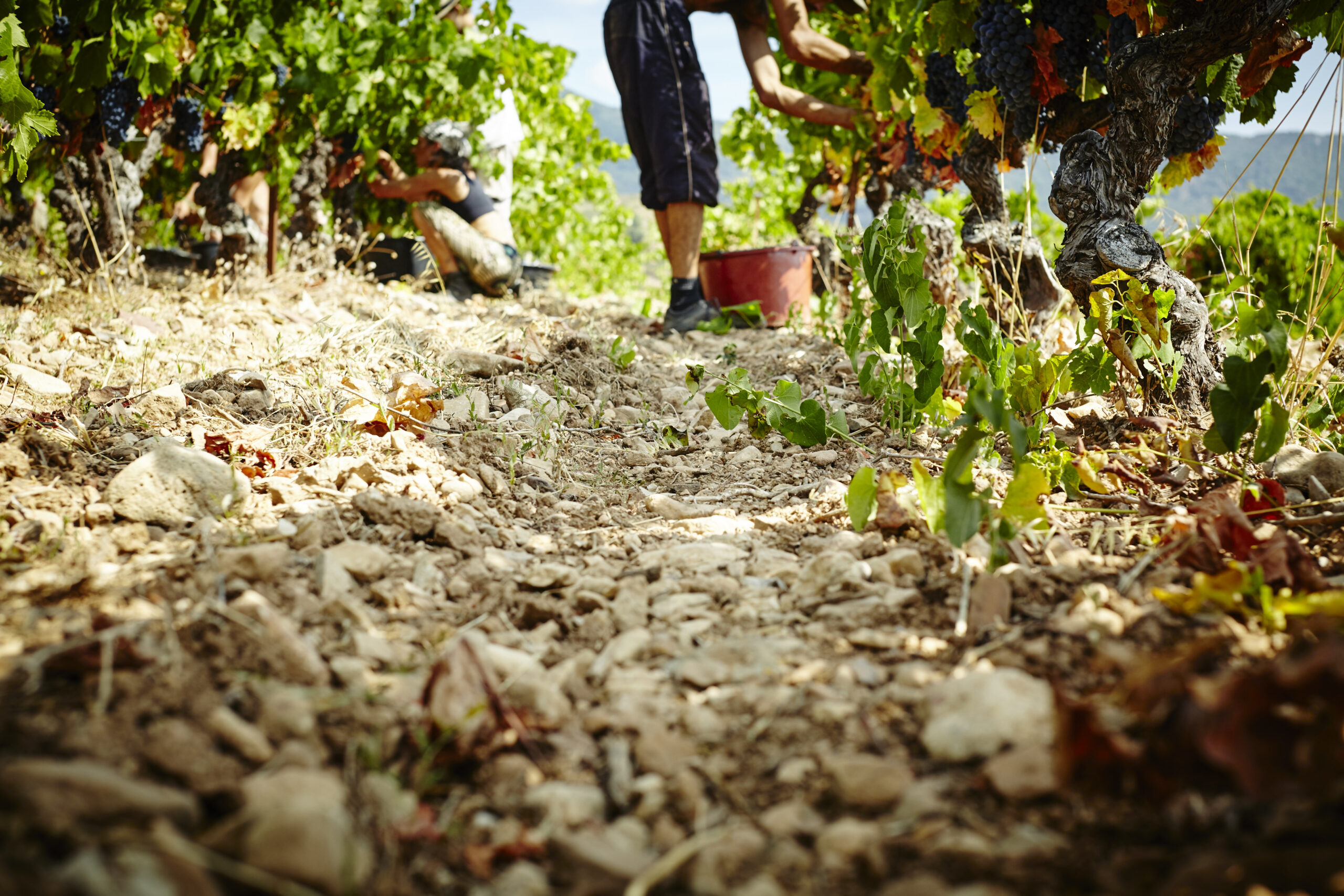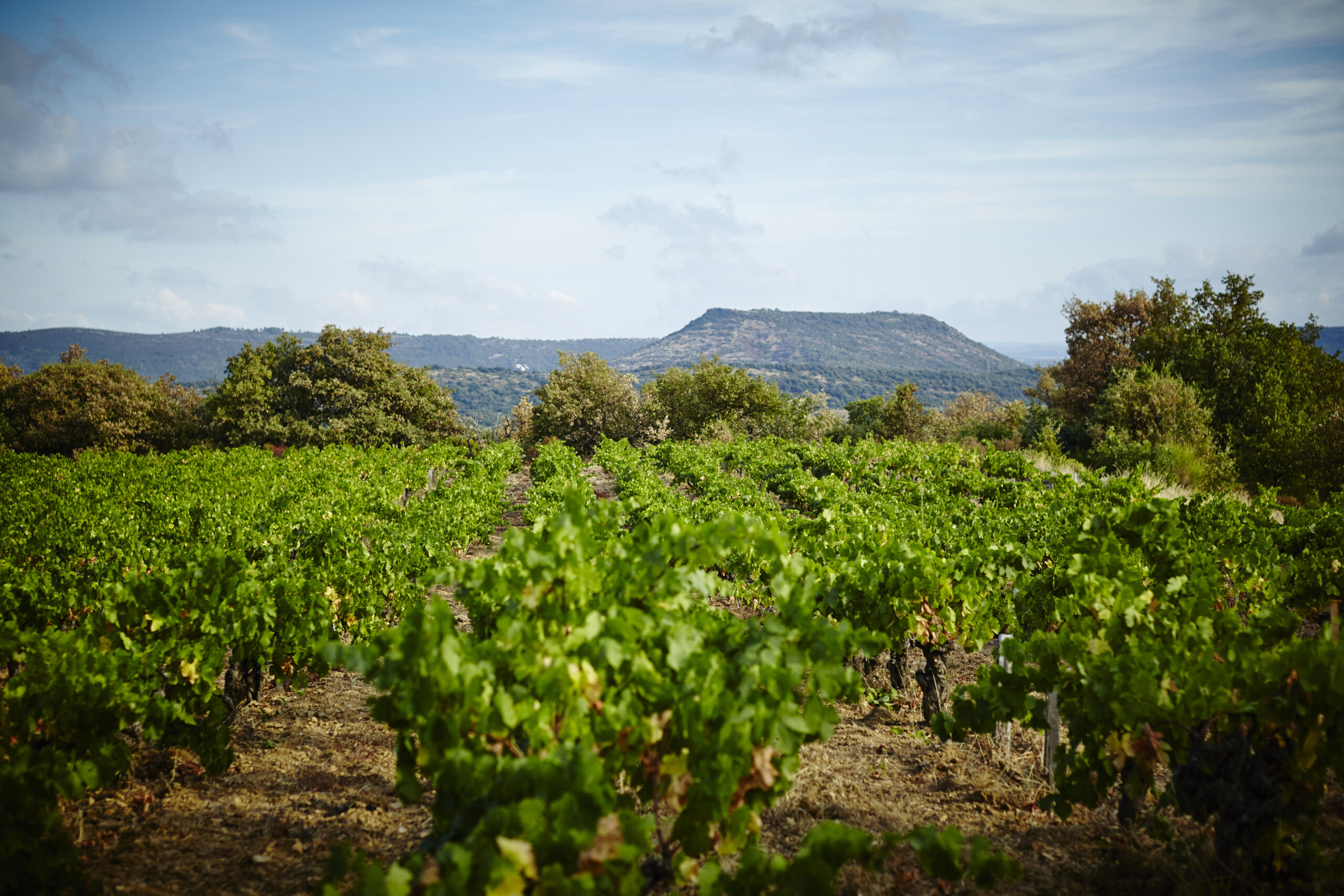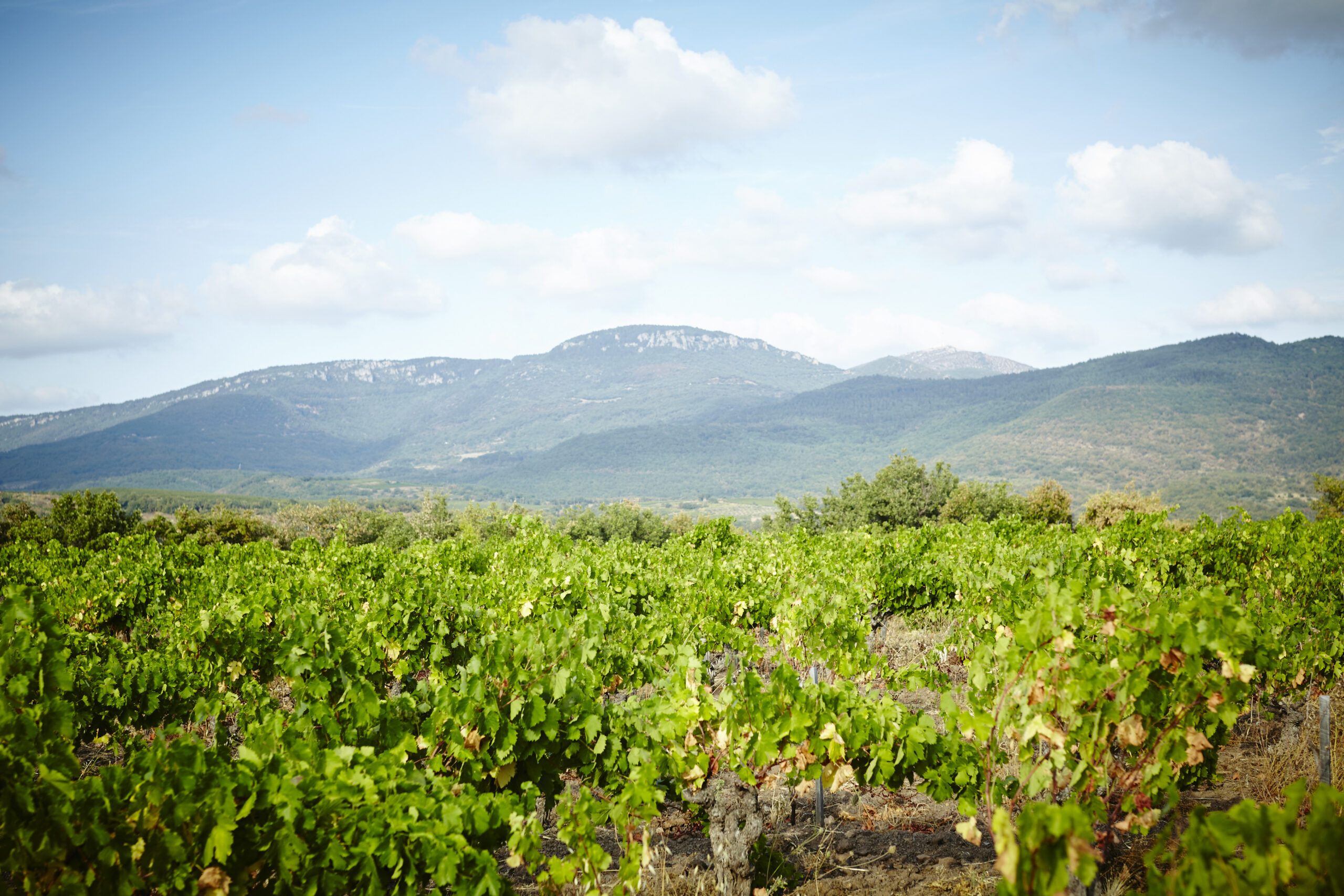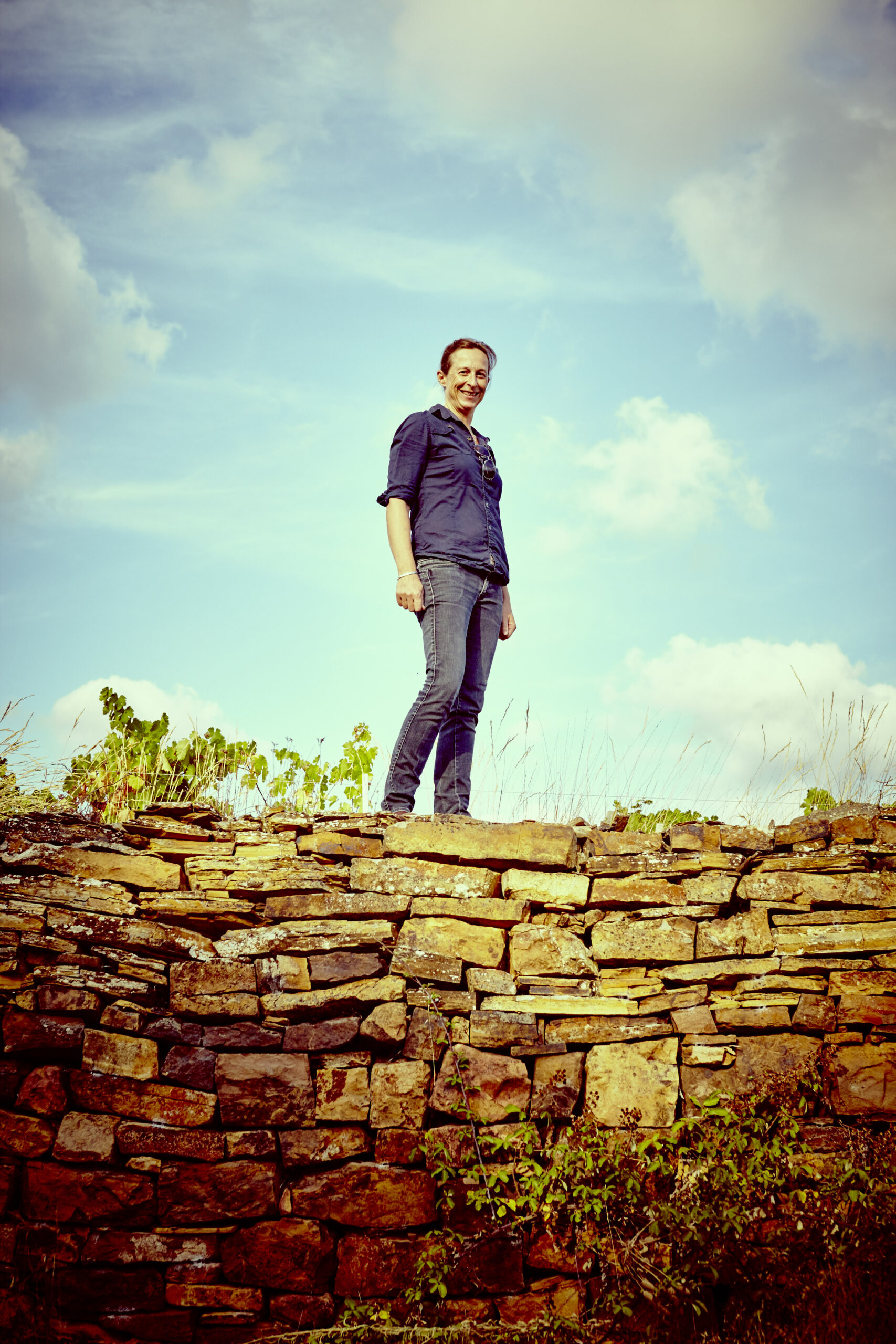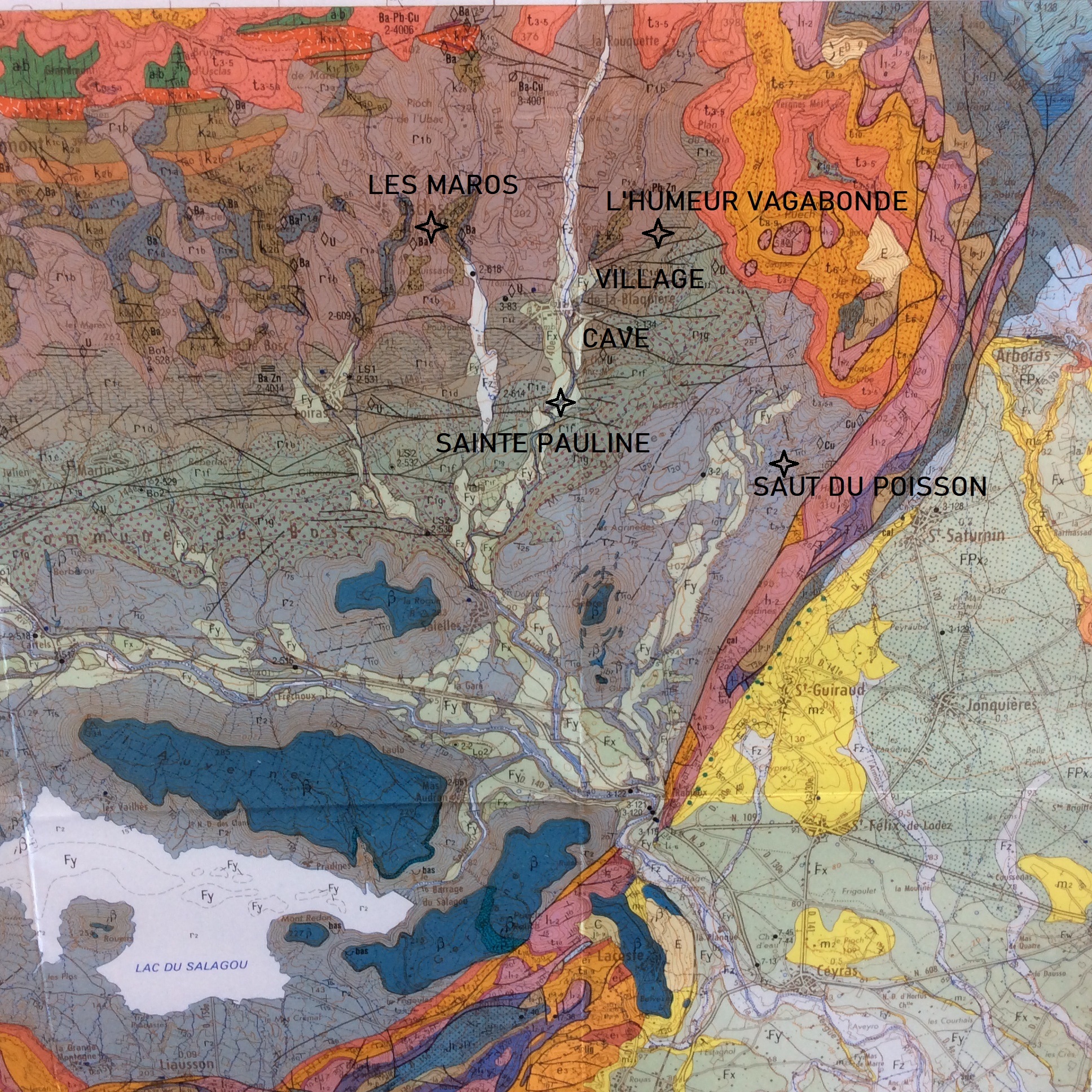Altitude 850 meters
The 15 hectares of vines are located 45 km north-west of Montpellier at the foothill of the Larzac plateau, which rises to 849 metres at Mont Baudile, at the crossroads of 2 climates: Mediterranean and mountain, giving the right balance between the generosity of the south and the freshness of Larzac.
Hot days, cool nights
During August, as the grapes reach full maturity, the vines benefit from cool night time temperatures of the Larzac plateau. There can be as much as 20°C difference between these and the daytime heat. And because this means the grapes mature more slowly, they develop polyphenols which encourage rich, more complex aromas to develop in the juices, which become more fruity and delightfully fresh.
Purity, frechness and elegance, the signature
Here you can see rocks that are 540 million years old
Formed from a major outcrop of Jurassic limestone, including fine sediment which, over a long period, settled 1000 metres down at the bottom of a warm, shallow ‘sea’. Six million year ago, serious earth movement and volcanic explosions lifted the land, creating the wide open spaces of the Larzac and other plateaux.
Huge number of galleries remain to be discovered in the hidden labyrinths at the heart of the layers of bedrock. Little by little, the water continuously eats away at the stone creating unlikely underground streams.
Flaky pelite is a sedimentary rock of Permian clays (primary era), which is rare and breaks into thin layers, also known as shale.
The colour varies between different shades of grey, reddish, greenish or yellowish.
A geological mosaic of soils
The whole area is made up of the most spectacular geological phenomena due to soil erosion and spectacular movement of the earth’s surface. This diversity is almost unique in France labelised by UNESCO GEOPARC. It is this terroir that gives our wines their special character.
To the north-west of the village, yellow and grey flaky pelites known as shale dominate. The vines’ roots plunge deep into the well drained stony layers ensuring wines with delicate, silky tannins. Long, mineral wine, the signature of this great terroir. Cuvées LES MAROS and L’HUMEUR VAGABONDE.
To the south-east of the village, the red flaky pelites (known as ruffes or red shale) are sandstone deposits that accumulated 265 million years ago, making these landscapes and terroirs unique in Europe. Cuvée SAUT DU POISSON.
To the south, the rolled pebbles of limestone and sandstone were carried by the river Marguerite from the Larzac plateau. Cuvée SAINTE PAULINE.
The Cuvée SAINT JEAN is a synthesis of all these terroirs and all our grape varieties.
The shale are deep deposits of sandstone accumulated some 265 million years ago and exposed by erosion. The region was volcanic, the last Salagou volcanos stopped erupting around 650,000 years ago The red ‘ruffes’ from the Primary era thus cohabit with the dark basalt which resulted from quaternary volcanic lava flow, making the countryside and terroirs unique in Europe.
Géology is a guide for our wine


